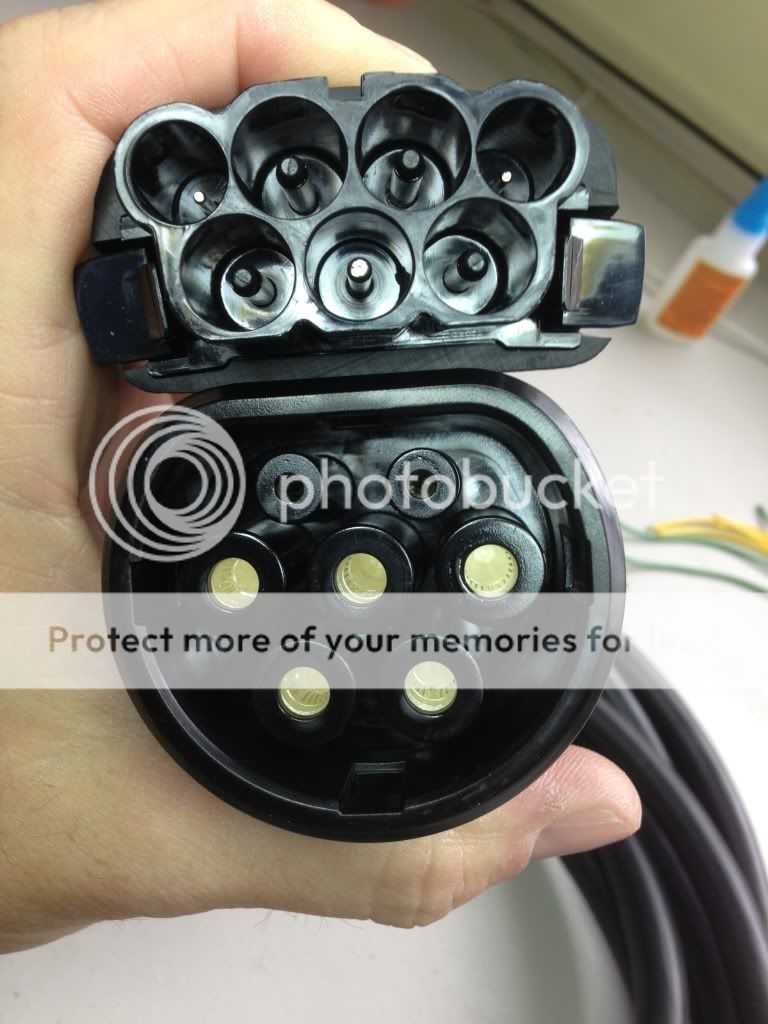xylhim said:
Does he still get the bonus if stations with CHADeMO and SAE start popping up by next year?
..... speculation about installation costs of a charging station is complete bunk.
I'm fine with privately funded Frankenplugs, either individually or with world standard CHAdeMO. Since I'm confident that Frankenplug is largely DOA, I don't want tax payer money being wasted on this folly. But, if it helps get more CHAdeMO units in the ground around the world, then perhaps that's a good thing. Then, when Frankenplugs are collecting dust in the future, maybe they can be converted to Tesla or another CHAdeMO plug. Seems like a win, win, except for the wasted money on obsolete hardware.
The incorrect speculation posted about charging station COSTS is bunk, that's correct. Saying it would only cost $500 to add Frankenplugs is obviously bunk, also.
The paltry sales of installed chargers and compatible electric vehicles from the 8 Frankenplug Cast Members is fact.
Protocol .......... US Deployed . World Deployed .... US Cars .... Worldwide Cars
Frankenplug ........ 3 ......................... 0 ..................... 0 ............. 0 ... (moribund)
CHAdeMO ......... 350 ................... 4,000 .............. 40,000 .... 110,000 (growing fast)
Supercharger .... 300 ...................... 325 .............. 16,000 ..... 20,000 (extreme growth)
First, a quote from EVTV's Jack Rickard, "I watched dozens of these scenarios play out as the Internet developed. You can vote yourself blind. You can decree standards till hell freezes over. As soon as someone comes out with a better one that sells, nobody can even remember the name of your standard. You play, or you lose market share."
During a Tesla shareholder's call, when the SAE standard was pointed out to co-founder and CEO Elon Musk, he said "Yes, the SAE have a standard.
But it sucks, which is why Tesla went its own way."
Let's review where GM and their German
Frankenplug Cast Members are today:
1. Audi – June 3, 2012 – cancels EV plans. No Frankenplug car announced or planned. It's no surprise that they are exempt from CARB-ZEV compliance.
2. BMW – i3, Early 2014 – these guys are the only ones of any of the Frankenplug consortium to have a serious EV program, that goes beyond just meeting California Air Resources Board (CARB) - Zero Emissions Vehicle (ZEV) standards. So far, zero cars sold in USA and no public charge stations installed in the USA.
Will use CHAdeMO in Japan, which means that they could also offer it here except for the economic-political battle from the Frankenplug consortium that they are a member of.
3. Chrysler / Fiat – they don’t even want to take “free” government money to develop EVs, and gave it back. The Fiat 500e compliance-only car has no Frankenplug, nor is one planned. Far less than 1000 cars sold. The CEO of the company is openly against EVs.
4. Daimler – working with Tesla on B Class for CARB-ZEV compliance with no DC fact charger of any kind. None sold to date. The Smart ED has no DC quick charge capability, either. No Frankenplug announced or planned. Far less than 1000 sold.
5. Ford – nada. The Focus EV is a luke warm effort for CARB-ZEV compliance, and they don’t even seem compelled to put much effort in that (Magna designed the car). No Frankenplug announced or planned. About 1000 sold.
6. General Motors – Spark EV, another CARB-ZEV compliance-only car. GM has sold about 500. Frankenplug is optional but not yet available, however it will cost $1500 extra per car. No other EV announced or expected. GM recently tried their Frankenplug shill in Korea, however the Koreans are obviously going with the world standard CHAdeMO. Another strikeout for Frankenplug.
7. Porsche – nada, no Frankenplug car announced or planned. Again, like Audi, it's no surprise that they are not required to meet CARB-ZEV compliance.
8. Renault – tentative and tepid announcement after the other 8 announced that they are “in”. No car announced to handle it, though, nor is one expected. They announced their own 43kW AC “Chameleon” fast charger and support of CHAdeMO that sister company Nissan uses. No Frankenplug announced or planned. They have produced thousands of EVs, however, and have numerous models planned or announced, none of which will use Frankenplug. This company does not offer cars in the USA, however their sister company Nissan is the world leader in EV sales with almost a 100,000 total sales, and they use CHAdeMO only.
9. Volkswagen – They plan to use converted Golf’s in 2014, presumably to be strictly CARB-ZEV compliance cars. While Volkswagen will use Frankenplug as the charging system for its EVs, the company will modify relevant units to
accommodate the CHAdeMo system for the Japanese market, which means that they could also offer it here except for their eco-political battle from the Frankenplug consortium.
One VW executive remarked, “
we don’t want to discriminate” on charging standards, explaining …the investors and the users will decide.”
*********


